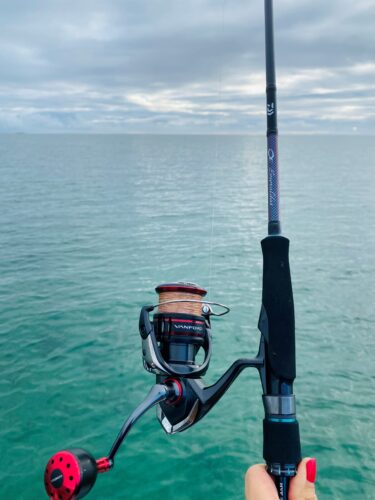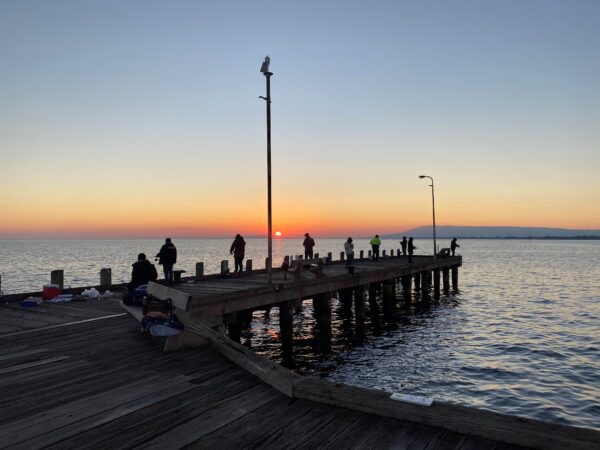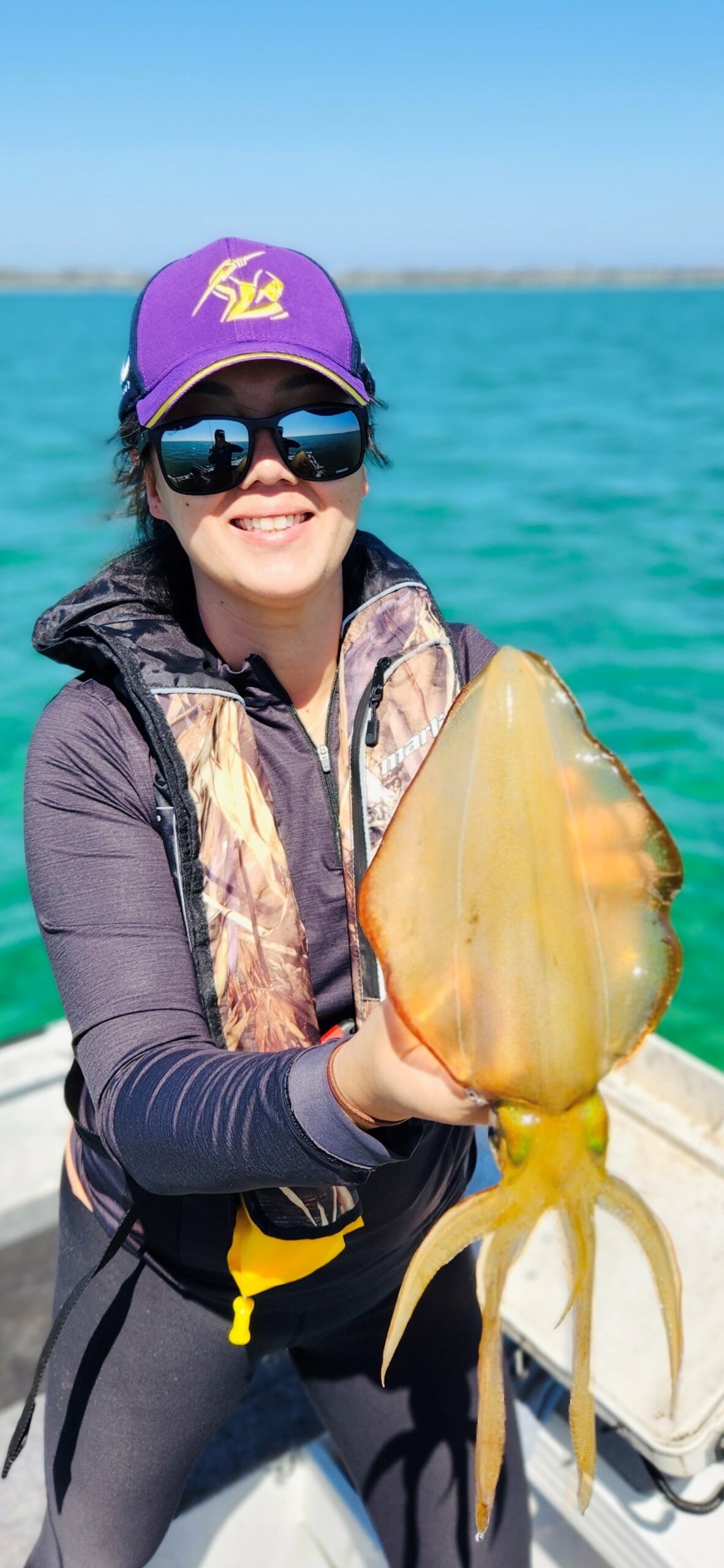Belonging to the cephalopod family, the Southern Calamari is more than just an intriguing marine creature. For anglers, this squid, found in Australia’s cooler waters, serves a dual purpose. Not only is it an enjoyable catch, recognised by its distinct green eyes, but it’s also an effective bait choice. Its culinary appeal is well-known, but for those with a rod and reel in hand, its value as fresh bait is of equal importance. Given its short lifespan, the Southern Calamari remains a consistent and reliable bait option throughout the year, adding to the angler’s toolkit from the vast cephalopod family.
Victoria catch limit: maximum 10 per day and no size limit
Rod
- Use a slow to regular taper rod so it flicks back slowly when working the jig, and a rod with medium to light weight rating for a balance between sensitivity and strength.
- For land-based anglers, use at least an 8 foot plus rod as it allows for a longer cast.

Rod preference for squid fishing
Reel and line
- Complement the rod with a 2500-sized reel that holds approximately 180m of braided line in PE 0.8 size (approximately 12-16pound breaking strain).
- Use 1.5-2m length of fluorocarbon leader to give stretch when working the jig and abrasion resistance.
- If you have the patience learn how to tie an FG knot to secure the leader to the braid. Otherwise you can use a double uni knot. A lure clip is beneficial for effortless jig transitions.
Jigs or fresh bait
Jigs
- any colour and personal preference. Although, having a white, black and rainbow coloured jigs are good staples.
- 3.0 to 3.5 pound jigs are great for bays
- 4.0 pound jigs are great for deeper and faster flowing current. Otherwise attach a sinker.
Fresh bait
- use baited jigs typically with silver whiting and a float
Preparation
- Knot inspection: ensure that the fishing line’s knots are robust and secure to handle the weight of a potential catch.
- Selecting squid jigs: Depending on water conditions and personal preferences, choose a set of squid jigs suitable for the day’s venture.
- Packing essentials: bring a hand towel to wipe any messy ink stains. Have a mini cooler prepared. It should contain snacks for sustenance, ice, and zip-lock bags for storing the catch.
- Weather check: before heading out, make sure the weather conditions are conducive for fishing, especially monitoring wind and rain.
Mastering the eging technique
- Casting: propel the squid jig into the water.
- Positioning: wait for the jig to touch the sea bottom.
- Technique: deliver 4 quick whips while reeling in. This movement simulates a prey such as an injured prawn darting left to right, attracting squids.
- Hooking: upon detecting resistance, maintain tension in the line. Gently reel in the catch.
Safely landing your squid
- Inking: before landing, let the squid release its ink to avoid a messy situation.
- Netting: use a long-handled net or gaff to safely bring in the squid.
- Dispatching: upon landing, quickly and humanely dispatch the squid with a quick karate chop between the hood and the head.
Southern calamari facts
- Recognised for their delectable, tender flesh.
- Equipped with sharp vision, often termed as Green-eyed squids.
- Typically, their life cycle is around 12 months, maturing post-mating.
- Chromatophores enable them to modify their colour changing cells for stealth.
- Their two elongated tentacles are instrumental in capturing prey.
- Avoid their unique parrot beak like mouth as it can cause a painful bite!
Optimal squid fishing times
- Ideal throughout the year, with a focus on tidal transitions and the periods around sunrise and sunset.
- Spring witnesses increased activity due to the spawning season.
- As squids have a one-year life cycle, this is when they attain their maximum size.
Squidding Hotspots in Mornington Peninsula
Rye pier at Mornington Peninsula stands as an epitome for squid fishing enthusiasts with its rich weedy grass beds. It attracts a vast number of anglers, especially during the summer and holiday periods. However, the colder months, despite the chill, are more serene, drawing locals and die-hard anglers. The far eastern side of the Rye pier is especially popular among seasoned anglers due to its strategic location and water currents.

Land-based
- Popular spots in Port Phillip Bay front include Portsea, Sorrento, Blairgowrie, Rye, Mount Martha rocks, and Mornington.
- Bass coast front is known for Cribs Point, Hastings, and Flinders piers.
- Look for signs such as ink stains on the pier, indicating recent squid activity.
- The corners of the pier are often the best.
By boat
- Drifting in shallow 2-9m deep waters rich in weedy grass beds are effective.
- Casting aligned with the drift direction enhances the chances of a catch.
- Having spare rods out the back dragging.
Other notable squid hot spots in Victoria: Bellarine Peninsula (St Leonards, Indented head, Portarlington and Queenscliff), Phillip Island (San Remo jetty), Western Port (Tyabb and Quail banks) and Port Phillip Bay (Frankston to Beaumaris).

